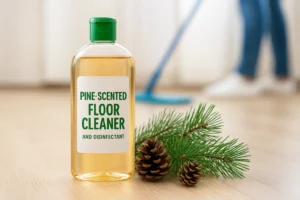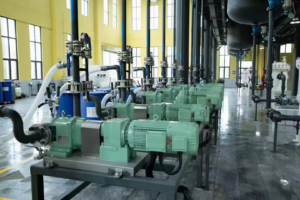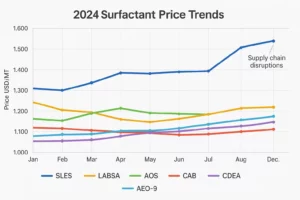Introduction
On March 1, 2023, China’s Ministry of Ecology and Environment issued the “List of Key Controlled New Pollutants (2023 Edition)” which, among other pollutants, included nonylphenol (NP) and octylphenol (OP) as environmental endocrine disruptors. This decision highlights the growing concern over the harmful effects of alkylphenol ethoxylates (APEOs) like NP and OP on the environment and human health. APEOs, particularly nonylphenol ethoxylates (NPEOs), make up 80-85% of the widely used non-ionic surfactants.
In response to these concerns, Fatty Alcohol Polyoxyethylene Ether, primarily AEO-9 has emerged as an environmentally friendly and non-toxic alternative to traditional NP/OP surfactants, offering promising solutions for industries such as personal care, detergents, and agriculture.
The Problem with NP/OP Surfactants
Harmful effects on the environment
NP/OP surfactants are known to be toxic to aquatic life, causing hormonal imbalances and reproductive issues in fish and other aquatic organisms. Their persistence in the environment also leads to bioaccumulation in the food chain.
Health risks for humans
Exposure to NP/OP surfactants has been linked to endocrine disruption, which can result in developmental, reproductive, and neurological disorders in humans.
Difficulty in biodegradation
NP/OP surfactants are not easily biodegradable, leading to their accumulation in water bodies and soil, causing long-term environmental damage.
Problems with wastewater treatment
NP/OP surfactants can interfere with wastewater treatment processes, reducing their effectiveness and causing issues in the treatment of water.
What is Fatty Alcohol Polyoxyethylene Ether?
Fatty Alcohol Polyoxyethylene Ether (FAPE) is a type of non-ionic surfactant that is widely used in various industries, including personal care, household, and industrial applications. FAPE is produced by ethoxylating fatty alcohols, which involves adding ethylene oxide molecules to fatty alcohols to form a chain of oxyethylene units. The number of oxyethylene units added to the fatty alcohol chain during the ethoxylation process determines the properties of the resulting FAPE surfactant.
FAPE is typically derived from natural sources such as coconut or palm kernel oil, and it is biodegradable and non-toxic, making it an environmentally friendly alternative to some other surfactants. However, it is important to note that FAPE can still have negative environmental impacts if it is not used and disposed of properly.
The properties of FAPE can vary depending on the number of oxyethylene units in the molecule. Generally, as the number of oxyethylene units in the FAPE molecule increases, the hydrophilic properties of the surfactant increase as well. This means that FAPE molecules with a higher number of oxyethylene units are more soluble in water and have better emulsifying, dispersing, and wetting properties. The hydrophilic-lipophilic balance (HLB) of the FAPE molecule also increases with an increasing number of oxyethylene units.
The names AEO-2, AEO-3, AEO-7, AEO-9, etc. are commonly used in the chemical industry to indicate the number of oxyethylene units in the FAPE molecule. The specific AEO name used can help determine the most suitable application for the surfactant based on its physical and chemical properties. Among all the variants, AEO-2 and AEO-9 are most used in the home care and personal care industries. AEO-2 is mainly used as the main raw material for synthesizing Sodium Lrureth Sulfate(SLES) and AEO-9 is a widely used cleansing and emulsifying agent in various cleaning products.
In summary, FAPE is a versatile and environmentally friendly non-ionic surfactant that is widely used in various industries. Its properties can be tailored by adjusting the number of oxyethylene units in the molecule, making it a highly customizable and effective ingredient in many formulations.
Applications of AEO-7 and AEO-9
Detergents and cleaning products
AEO-7 and AEO-9 are becoming more and more utilized in household and industrial cleaning products, including laundry detergents, dishwashing liquids, and all-purpose cleaners, as they offer enhanced cleaning performance and are environmentally friendly.

Agricultural chemicals
These surfactants are used in the formulation of pesticides, herbicides, and fertilizers, helping to improve the effectiveness of these products while reducing their environmental impact.
Textile industry
AEO-7 and AEO-9 are employed as wetting agents, emulsifiers, and dispersants in the textile industry, aiding in the even distribution of dyes and improving the overall quality of the finished product.
Oil and gas industry
The oil and gas industry utilizes AEO-7 and AEO-9 as emulsifiers and dispersants in drilling fluids, enhancing the efficiency of drilling operations and reducing the environmental footprint.
Future of AEO-7 and AEO-9
Growing demand
As awareness of the environmental and health risks associated with NP/OP surfactants increases, demand for safer alternatives like AEO-7 and AEO-9 is expected to grow.
Ongoing research and development
Investment in research and development will continue to drive improvements in the performance and production of AEO-7 and AEO-9, making them even more competitive with traditional surfactants.
Safety regulations and guidelines for AEO-7 and AEO-9
AEO-7 and AEO-9 are subject to safety regulations and guidelines set by organizations such as the US Environmental Protection Agency (EPA) and the European Chemicals Agency (ECHA). These agencies ensure that these surfactants meet safety and environmental standards, making them a safer option compared to NP/OP surfactants.
Compared to NP/OP surfactants, AEO-7 and AEO-9 have a better safety profile and reduced environmental impact, making them a more sustainable choice for various applications.
Cost and Availability
Production costs
While the production costs of AEO-7 and AEO-9 are generally higher than those of NP/OP surfactants, ongoing research and development efforts are expected to reduce these costs over time. Despite the current cost differences, the long-term benefits of using AEO-7 and AEO-9 in terms of environmental impact and safety make them a viable alternative to NP/OP surfactants.
Availability in different regions
AEO-7 and AEO-9 are becoming more widely available in various regions, as more companies adopt these environmentally friendly surfactants and phase out the use of NP/OP surfactants.
Transitioning to AEO-7 and AEO-9
How to switch from NP/OP surfactants
Companies can transition to AEO-7 and AEO
-9 by working with surfactant suppliers to identify the most suitable AEO-7 or AEO-9 alternatives for their specific applications. Testing and reformulating products may be necessary to ensure optimal performance while maintaining the desired product characteristics.
Challenges in the transition
Transitioning to AEO-7 and AEO-9 may involve challenges such as increased costs, potential changes in product formulations, and the need for additional research and development. However, the long-term benefits of using these eco-friendly surfactants outweigh these initial challenges.
Benefits of transitioning
Switching to AEO-7 and AEO-9 can lead to improved environmental sustainability, reduced health risks, and enhanced product performance, making the transition a worthwhile investment for businesses and consumers alike.
Case Study: AEO-9’s Role in Revolutionizing High-Efficiency Detergents

AEO-9 has proven to be particularly effective in high-efficiency (HE) detergent formulations. HE detergents are specifically designed for use in high-efficiency washing machines, which use less water and energy compared to traditional washing machines. The unique properties of AEO-9 make it an ideal ingredient for these specialized detergents.
In a previously published article titled “The Secret Ingredients of HE Detergents: AEO-9, Sodium Polyacrylate, and Enzymes”, we delved into the key components that make HE detergents effective and environmentally friendly. AEO-9, with its excellent defoaming properties, excellent cleaning ability, and ability to function at lower temperatures, is a crucial ingredient that allows HE detergents to provide superior cleaning performance while minimizing environmental impact. It perfectly meets the growing demand for eco-friendly cleaning products.
Conclusion
AEO-7 and AEO-9 are emerging as safer and more environmentally friendly alternatives to traditional NP/OP surfactants. Their superior performance, biodegradability, and compatibility with other surfactants make them ideal for various industries, including personal care, detergents, agriculture, and textiles. Transitioning to AEO-7 and AEO-9 can provide numerous benefits to both businesses and the environment, making it essential to continue supporting the adoption of these sustainable surfactants.
FAQs
Q: What are the potential side effects of using AEO-7 and AEO-9?
A: AEO-7 and AEO-9 are considered safer alternatives to NP/OP surfactants and have lower toxicity levels. However, like any chemical, they should be used in accordance with safety guidelines and regulations to minimize potential side effects.
Q: What are the main industries that use AEO-7 and AEO-9?
A: AEO-7 and AEO-9 are used in various industries, including personal care, detergents and cleaning products, agricultural chemicals, textile, and oil and gas.
Q: How do AEO-7 and AEO-9 compare to other types of surfactants?
A: AEO-7 and AEO-9 offer superior foaming, cleaning, and emulsifying properties compared to NP/OP surfactants. They are also more biodegradable and environmentally friendly, making them a preferable choice for many applications.
Q: Are AEO-7 and AEO-9 more expensive than NP/OP surfactants?
A: Currently, AEO-7 and AEO-9 may be more expensive than NP/OP surfactants. However, ongoing research and development efforts are expected to reduce production costs and make them more competitive over time.
Q: What are the challenges of transitioning to AEO-7 and AEO-9?
A: Challenges in transitioning to AEO-7 and AEO-9 include increased costs, potential changes in product formulations, and the need for additional research and development. Despite these challenges, the long-term benefits of using these eco-friendly surfactants make the transition a worthwhile investment.






